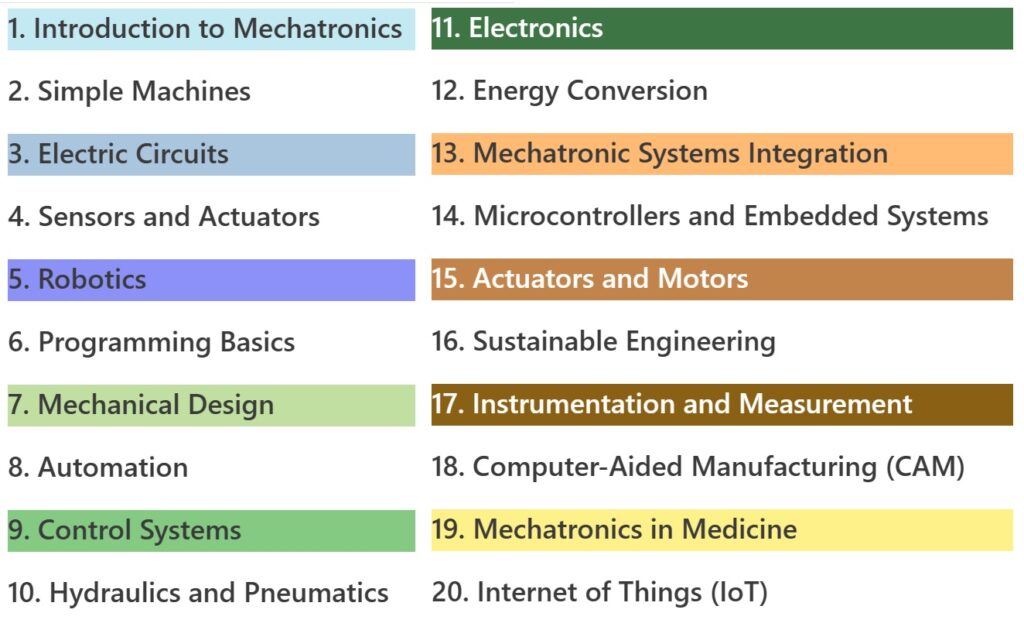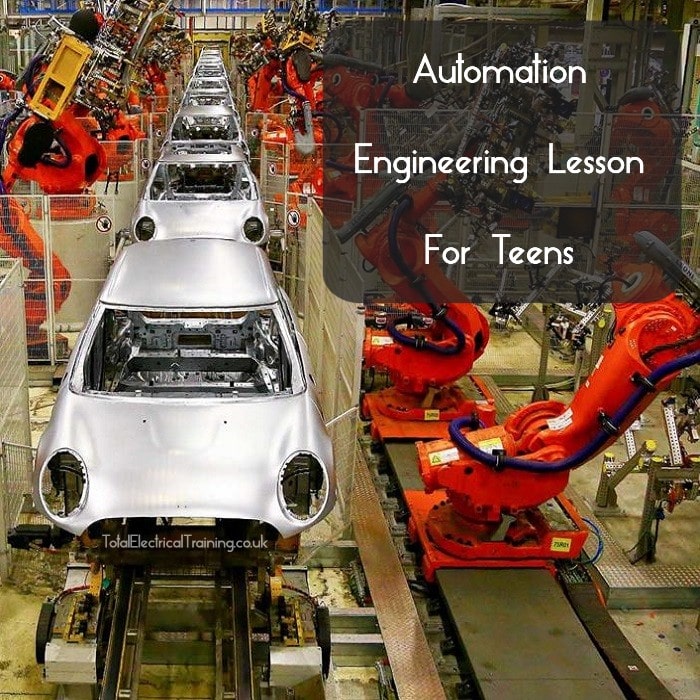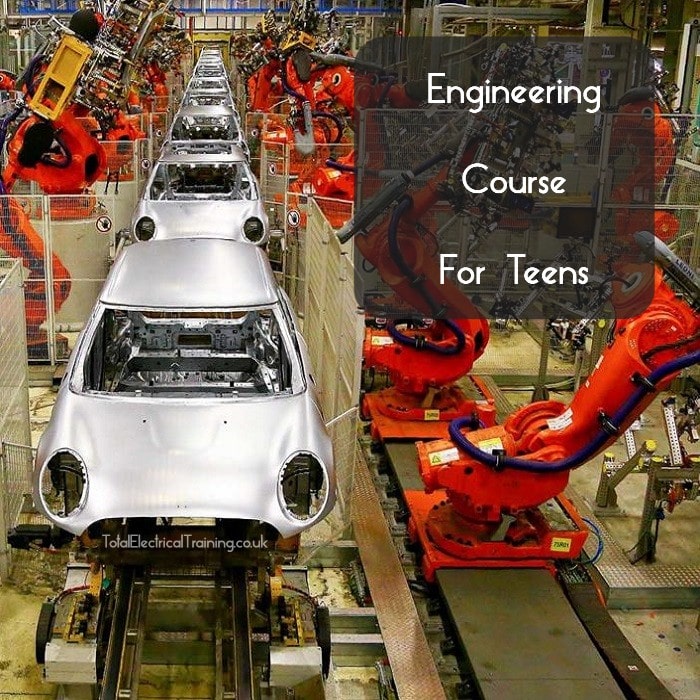Click the simple table below to view the FREE Mechatronics Course for Kids OVERVIEW

This Lessons Contains: READING, VIDEOS, and QUESTIONS.
An Introduction to Automation
Automation has become a buzzword in the modern world, revolutionizing various industries and daily life activities. But what exactly is automation? How does it impact different sectors, from agriculture to daily routines? Let’s delve into this fascinating realm and explore its nuances.

What is Automation?
In its simplest form, automation refers to the use of technology to perform tasks with minimal human intervention. It involves the creation and deployment of systems or machines that can operate autonomously, following predefined instructions or algorithms. These systems are designed to streamline processes, enhance efficiency, and reduce the need for manual labor.
Benefits of Automation in Agriculture
One of the sectors where automation holds tremendous promise is agriculture. With the global population on the rise and arable land becoming scarcer, there’s a growing need to enhance agricultural productivity while minimizing resource consumption. Automation addresses these challenges by offering:
- Precision Farming: Automation technologies like drones, sensors, and GPS-guided machinery enable farmers to monitor crop health, optimize irrigation, and apply fertilizers with pinpoint accuracy. This precision farming approach increases yields while conserving water and minimizing environmental impact.
- Labor Savings: Automated machinery such as robotic harvesters and milking machines alleviate the need for manual labor, particularly in labor-intensive tasks like harvesting fruits or tending to livestock. This not only reduces labor costs but also addresses the challenge of labor shortages in rural areas.
- Data-Driven Insights: Automation generates vast amounts of data related to soil conditions, weather patterns, crop health, and yield predictions. By harnessing this data through advanced analytics and machine learning algorithms, farmers can make informed decisions to optimize crop production and resource utilization.
Examples of Automation in Daily Life
Automation has permeated various aspects of our daily routines, making tasks more convenient, efficient, and seamless. Some common examples include:
- Smart Home Systems: Devices like smart thermostats, lighting systems, and security cameras automate household tasks, such as adjusting temperature settings, turning lights on/off, and monitoring home security. These systems enhance comfort, energy efficiency, and security while reducing manual intervention.
- Online Shopping: E-commerce platforms leverage automation to personalize product recommendations, process orders, manage inventory, and facilitate seamless transactions. This automation streamlines the shopping experience for consumers and enables retailers to operate more efficiently.
- Autonomous Vehicles: The automotive industry is witnessing a shift toward automation with the development of self-driving cars and trucks. These vehicles use sensors, cameras, and AI algorithms to navigate roads, detect obstacles, and make driving decisions, promising to improve road safety and efficiency in the future.
Feedback Loops in Automated Systems
Feedback loops play a crucial role in automated systems by enabling them to adapt and optimize performance over time. In automated systems, feedback loops involve:
- Sensing: Sensors and data-gathering mechanisms collect information about the system’s performance, environment, or output.
- Processing: The collected data is analyzed to assess the system’s performance relative to desired outcomes or predefined criteria.
- Adjustment: Based on the analysis, the system makes adjustments or corrections to its operation to maintain or improve performance.
- Iteration: This process repeats iteratively, with the system continually adjusting its behavior based on feedback, leading to continuous improvement and optimization.

In conclusion, automation represents a transformative force across various domains, offering unprecedented opportunities to enhance efficiency, productivity, and quality of life. By understanding its principles and applications, we can harness the power of automation to address complex challenges and shape a more sustainable and technologically advanced future.
Questions
- What is automation?
- How can automation be beneficial in agriculture?
- What are some examples of automation in daily life?
- How do feedback loops work in automated systems?
- Research Question: Discover how automation is changing the manufacturing industry.
Hands on Project
There is no hands on project for this lesson.
Buy me a Coffee
I would be honoured if you’d buy me a digital coffee to express your thanks for this Mechatronics Course I’ve put together to help eager minds excel in their knowledge, learning and success.
Your kind donation makes it possible for me to continue creating amazing content and fulfil my dream of keeping the majority of what I make FREE and Ad FREE!!!
Thank you from the bottom of my heart, and abundant blessings to you!

Join students and professionals
from across the world increasing their knowledge of Electrical Engineering.
One email at a time
We never send spam or give your information to anyone, Privacy Policy here.



